Nuclear Physics Seminars and Journal Clubs
30 Apr 2024, Tuesday, 2:30 PM (PHYS 242)-
Miguel Arratia (University of California Riverside)
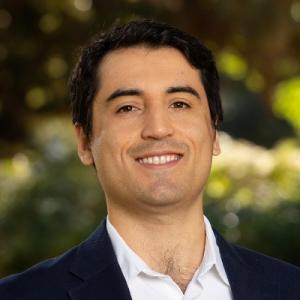
- Jets and Next-Generation Calorimeters at the Electron-Ion Collider
- Abstract: I will outline the scientific goals achievable at the future Electron-Ion Collider through the analysis of particle jets, which are an unprecedented discovery tool for studying electron scattering off polarized protons and heavy nuclei. Additionally, I will discuss the ongoing R&D of next-generation, highly granular calorimeter systems and how their capabilities, fully exploited with AI/ML approaches, will enhance a wide variety of studies at the EIC. Finally, I will describe an EIC pathfinder program for this decade, using electron-scattering data from JLab and HERA experiments.
- Emilie Duckworth (Kent State University)
- Directed Flow of Protons and Anti-Protons in RHIC Beam Energy Scan II
- Abstract: Directed flow of particles is an important feature seen in heavy-ion collisions and is a sensitive probe of the equation of state (EoS) of the matter produced in the collisions. Model calculations have predicted that directed flow could be a sensitive probe of the softening of the EoS associated with a first order phase transition. Directed flow of protons and anti-protons are also of interest as they offer sensitivity to both the contributions from the transported quarks and also the medium generated component from the produced quarks. Measurements of proton and net proton directed flow from BES-I have shown that there is a non-monotonous dependence on collision energy. We will present measurements of the directed flow of protons and antiprotons from the collision energies of 7.7, 14.6, and 19.6 GeV Au+Au collisions, using high statistics BES-II data from STAR. We will also present a decomposition of proton directed flow into a medium generated component and a component (v1excess) attributed to transported protons. The dv1excess/dy' (y'=y/ybeam) is found to be constant between collision energies from 200 GeV to ~7.7 GeV, but to increase below that. Measurements will be compared to different model calculations and implications to the understanding of the QCD phase structure and softening of the EoS of the medium will be discussed.
- Dr. Elke Aschenauer (Brookhaven National Laboratory)
- The Electron-Ion Collider - A World Wide Unique Collider to Unravel the Mysteries of Visible Matter
- Abstract: Understanding the properties of nuclear matter and its emergence through the underlying partonic structure and dynamics of quarks and gluons requires a new experimental facility in hadronic physics known as the Electron-Ion Collider (EIC). The EIC will address some of the most profound questions concerning the emergence of nuclear properties by precisely imaging gluons and quarks inside protons and nuclei such as their distributions in space and momentum, their role in building the nucleon spin and the properties of gluons in nuclei at high energies. In January 2020 the EIC received CD-0 and Brookhaven National Laboratory was selected as site, followed by CD-1 in June 2021 and CD-3 is expected by January 2024. This presentation will give highlights on the EIC science program, introduce the experimental equipment and its integration into the accelerator and give the status of the EIC project, as well what are the next major steps.
- Professor Zhenyu Ye (University of Illinois Chicago)
- Electron-Ion Collider: Physics and Detector Design
- Abstract: Electron-Ion Collider (EIC) is the next flagship facility for high energy nuclear physics that will be built in the USA. It will facilitate studies of the interactions and properties of nuclear mater through ultra-relativistic electron-ion collisions. By measuring particles produced from polarized electron-proton collisions, three-dimensional momentum and spatial distributions of quarks and gluons in the nucleon will be mapped, the origins of the nucleon spin and mass will be revealed. By comparing between electron-proton and electron-nucleus collisions, it will be studied how the dense nuclear environment affect the quark and gluon distributions and their hadronization processes. In this talk, I will describe the physics program of the EIC, and the on-going community effort to optimize the detector design and develop new detector technologies for the EIC experiment.
-
Dr. Ernst Sichtermann (Lawrence Berkeley National Laboratory)

- Electron-Ion Collider: Physics and Detector Design
- Abstract:
Nucleons and nuclei have rich inner structures with strongly interacting quarks and gluons. Past investigations have yielded considerable surprises. The gluon, in particular, has thus far proven rather elusive and open questions include their spatial distribution, their role for nucleon spin, and emergent phenomena from self-interaction.
The future US-based Electron-Ion Collider (EIC) will have unique capabilities to collide beams of polarized electrons with beams of polarized protons, polarized light ions, or heavier ions over a range of collision energies and with high luminosity to address these and other fundamental questions.
This talk will discuss the context, science, and status of the EIC and its detector(s).
-
Professor John Lajoie (Iowa State University)
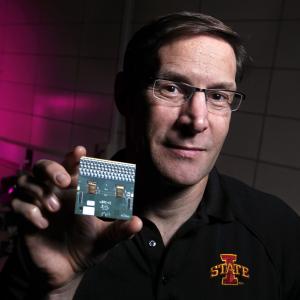
- The Electron Ion Collider: A Unique New Microscope for Matter
- Abstract: The visible world around us is made up of atoms, with protons and neutrons forming the nuclei at their core. Together, protons and neutrons make up most of the mass of everything we see in the universe today, from massive galaxies to individual people. Protons and neutrons themselves are complicated many-body quantum states whose prpoerties are determined by the quarks and gluons that they are comprised of. The quest to understand in detail the structure of protons, neutrons, and nuclei is nothing less that an attempt to answer the questions "What are we made of? What is matter?" The Electron Ion Collider (EIC), to be built by JLab and BNL, will be a unique new machine to collide polarized electrons off polarized protons and light nuclei, providing the capability to study multi-dimensional tomographic images of protons and nuclei, and collective effects of gluons in nuclei. In this colloquium I will motivate the physics program at the EIC and the unique new machine and detectors that will be required to answer these fundamental questions.
- Soumik Chandra (Purdue University)
- Detector technology used in CMS, focusing on RPC (Resistant Plate Chamber) and Silicon trackers
- Milan Stojanovic
-
Modified Newtonian Dynamics -- Alternative to the Dark Matter Paradigm
[Based on arXiv:1404.7525, arXiv:1404.0531, McGaugh MOND page]
- Rui Xiao
-
Introduction to quantum computing
- Yicheng Feng
-
CME in condensed matter
- Dr. Milan Stojanovic
-
Two-particle longitudinal correlations on LHC
[ATLAS Collaboration, Phys. Rev. C 95 (2017) 064914]
- Yicheng Feng
-
Dubaryon
- Cheng-chieh Peng
-
Blind analysis in nuclear and particle physics
[Joshua R. Klein, Aaron Roodman, Ann.Rev.Nucl.Part.Sci. 55 (2005) 141-163]
- Rui Xiao
-
Machine leaning in nuclear physics
- An Gu
-
Neutron Star Introduction
- Yicheng Feng
-
Photons collide into electron-positron pair
- Dr. Jinjin Pan (Wayne State University)
- Two-particle Correlation and General Balance Function Measurements in Relativistic Heavy Ion Collisions with ALICE
- Abstract:
In relativistic heavy-ion collisions, correlations of particles with opposite quantum numbers provide insight into charge creation mechanisms, the time scales of quark production, collective motion of the Quark Gluon Plasma (QGP), and re-scattering in the hadronic phase.
The longitudinal and azimuthal widths of general charge balance functions for pions, kaons, and protons are used to examine the two-wave quark production model recently proposed to explain quark-antiquark production within the QGP, which predicts a large increase in up and down quark pairs relative to strange quark pairs around the time of hadronization. Furthermore, the magnitudes of the balance functions for different particle pairs provide quantitative differential information on pair production channels. In addition, a detailed study of balance functions for different identified hadrons probes the fragmentation mechanism of strings into different quark flavors. Balance functions are also analysed in small collision systems such as p-Pb and pp to study fragmentation effects and possible collective effects in high-multiplicity events.
We present a comprehensive set of measurements of general charge balance functions for unidentified hadrons, pions, kaons, protons, and their cross-species pairs in Pb-Pb (nucleon-nucleon center-of-mass energy 2.76 and 5.02 TeV), p-Pb (5.02 TeV) and pp (5.02 and 7 TeV) collisions in ALICE. Theoretical expectations and Monte Carlo models are then compared with the experimental data. In Pb-Pb collisions, we observe that the Δy and Δφ widths of the charged-pion balance function are narrower in central collisions compared to peripheral ones, while the widths of the charged-kaon balance functions do not show a centrality dependence. These results are consistent with expectations based on the two-wave scenario and radial flow.
-
Prof. Denes Molnar
- Computer architecture and efficient computing
- Dr. Shuai Yang (Brookhaven National Laboratory)
- Measurements of photon interactions in hadronic heavy-ion collisions at STAR
- Abstract: Photon-photon and photonuclear interactions can be induced by the strong electromagnetic fields arising from relativistic heavy ions. These two types of interactions are conventionally studied in ultra-peripheral collisions (UPC). The ALICE collaboration has observed a significant excess of J/ψ yields at low transverse momenta (pT) in peripheral Pb+Pb collisions, which can be qualitatively explained by coherent photonuclear production mechanism. Such an explanation implies that photon-photon interactions would be also measurable and contribute to the ℓ+ℓ- pair production in hadronic heavy-ion collisions. Since the nuclei break up in peripheral heavy-ion collisions unlike in the UPCs, it is non-trivial to incorporate the coherence condition for the aforementioned photon interactions in such collisions. Measurements of J/ψ and e+e- pair productions at very low pT for different collision systems and energies, discussed in this talk, are thus important to verify and further understand photon interactions and their possible impacts on emerging phenomena in hadronic heavy-ion collisions.
-
Rachid Nouicer (Brookhaven National Laboratory)

- sPHENIX Intermediate Silicon Tracker: Physics and Detector Technology
- Abstract:
The study of the properties of hot and dense QCD matter, in particular, its deconfined Quark-Gluon Plasma (QGP) state, is one of the main areas of nuclear physics research described in the US 2015 NSAC Long-Range Plan which states: "The upgraded RHIC facility provides unique capabilities that must be utilized to explore the properties and phases of quark and gluon matter in the high temperatures of the early universe and to explore the spin structure of the proton".
In this context, the sPHENIX collaboration at RHIC proposes a major upgrade to the PHENIX detector by constructing new spectrometer based on the former BaBar solenoid magnet. This upgrade, sPHENIX, enables an extremely rich jet and beauty quarkonia physics program addressing fundamental questions about the nature of the strongly coupled quark-gluon plasma, discovered at RHIC. Among the sPHENIX detector systems, precision tracking inside the 1.5 Tesla BaBar superconducting solenoid plays a crucial role to reduce fake track contributions and improve the momentum resolution, thus leading to separation of the three epsilon states and to separation of charm and bottom quarks. A charged particle tracking system employing an ”INTermediate silicon Tracker (INTT)”, consisting of four layers of the silicon strip detectors placed circumferentially in the radial space from 6–12 cm, will satisfy the above requirements.
In this talk, we will present an overview of the sPHENIX physics program, detector design, and in particularly technology choices for the intermediate silicon tracker.
- Dr. Terrence Tarnowsky (Michigan State University)
- Study of High Density Nuclear Matter Using Fixed Target Collisions at RHIC
- Abstract:
There is still a great deal of uncertainty about the state of nuclear formed in low/intermediate energy heavy-ion collisions and described by Quantum Chromodynamics (QCD). Large value of net-baryon densities at these energies leads to substantial theoretical uncertainties. Some predictions indicate that at center-of-mass (CMS) collision energies below 5 GeV a mixed partonic/hadronic system is created. Before reaching an equilibrated QGP phase at higher energies, the system formed in heavy ion collisions at low/intermediate energies may pass through this mixed phase of partonic and hadronic matter, whose properties have not been well quantified. In this regime, it is possible to observe the phase transition from hadronic matter to a deconfined partonic phase.
Brand new physics opportunities have recently opened up at STAR/RHIC. With the installation of a gold foil target, STAR can operate in a fixed target mode with the unique capability to probe the nature of the QCD phase diagram below the maximum net-baryon density at hadronic freeze-out (maximum compression). This new capability of the STAR detector and the RHIC complex opens up a wide-range of possible physics programs. It is possible to study the onset of this deconfinement phase transition from hadronic to partonic matter at RHIC and if the phase transition is first order, as predicted by theory and hinted at by experimental studies. I will discuss first results from measurements of dynamical net-charge fluctuations in Au + Au and Al + Au collisions at CMS collision energies between 3 - 200 GeV from collider and fixed target operations, along with ideas for a comprehensive study of this region of the QCD phase diagram by utilizing the new capabilities at RHIC.
-
Professor Mike Lisa (The Ohio State University)

- Subatomic Fluid Spintronics-Global Hyperon Polarization in Heavy Ion Collisions at RHIC
- Abstract: In 1915, Barnett et al found that rotation of a metal cylinder can induce a magnetization in the object. This remains a rare example of a coupling between macroscopic mechanical rotation and quantum spin (though this was not the paradigm of the day). Just this year (2016), Takahashi et al discovered the first polarization of electrons induced by mechanical vorticity induced by viscous effects in a fluid; they thus heralded the new field of fluid spintronics. In 2000, first collisions at Brookhaven National Lab's Relativistic Heavy Ion Collider (RHIC) led to the surprising discovery that the deconfined quark-gluon plasma (QGP) is best described as a "nearly perfect fluid." These fluid properties remain the focus of intense study, and are providing insights into the Strong force in the non-perturbative regime. However, fundamental features of the fluid--including its vorticity--are largely unexplored. I will discuss recent measurements by the STAR Collaboration at RHIC, on the spin alignment, or polarization, of Lambda hyperons with the angular momentum of the collision. I will argue that a RHIC collision generates the subatomic analog of Takahashi's observation, the vorticity generated by initial viscous forces and maintained by subsequent low viscosity. These measurements allow an estimate of both the vorticity of the QGP and the magnetic field in which it evolves. Both of these quantities far surpass any known system in the universe. Furthermore, knowledge of both is crucial to recent studies that may reveal the onset of chiral symmetry restoration in QCD.
-
Professor Roy Lacey (Stony Brook University)
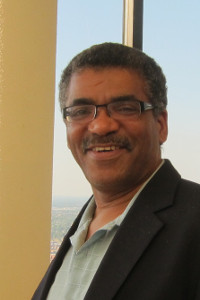
- Indications for the QCD Critical Point
- Abstract:
A major goal of the ongoing heavy ion experimental programs at RHIC is to chart the QCD phase diagram. Pinpointing the location of the phase boundaries and the critical end point (CEP), in the temperature versus baryon chemical potential (T,μB) plane of the phase diagram, is key to this mapping. I will discuss recent attempts to locate the CEP via static and dynamic Finite-Size Scaling (FSS) of susceptibility measurements. Initial results from these attempts indicate a second order phase transition at the CEP, with the estimates TCEP~165 MeV and μBCEP~95 MeV for its location. The critical exponents (ν~0.66 and γ~1.2, δ~4.6) obtained via the same analysis, place this CEP in the 3D Ising model universality class.
-
Dr. Peter Jacobs (Lawrence Berkeley National Laboratory)
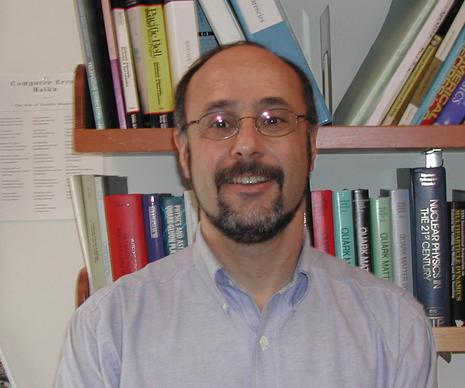
- Abstract:
- Prof. Wei Xie (Purdue University)
- Abstract:
-
Prof. Jinfeng Liao (Purdue University)
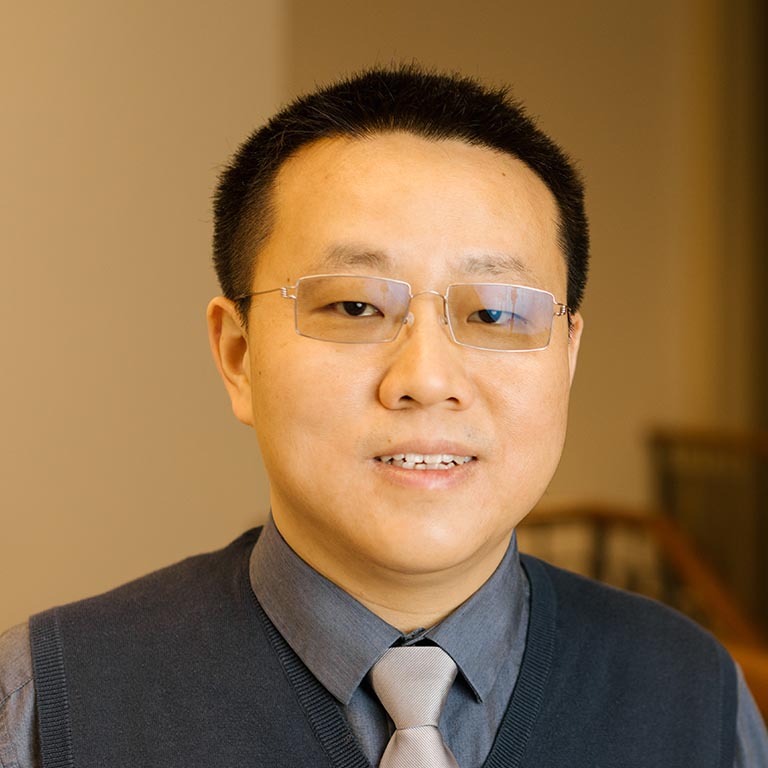
- Bio: Assis. Prof., RIKEN/BNL fellow, 2011-present; Postdoc, Berkeley Lab, 2008-2011; Ph.D, Stony Brook, 2008; NSF Early Career Award, 2014. Nuclear theorist. Main interest in studying the structures and properties of quark-gluon plasma. Recent works on pre-equilibrium effects, quark confinement and strong coupling, topological effects and symmetry-violating phenomena.
- Abstract:
- Professor Gang Wang (Indiana-Purdue University, Fort Wayne)
- Defects in Optically Assisted Assembly of Colloidal Microspheres
- Abstract: We present an experimental study of the defects in optically-assisted assembly of colloidal particles. Micron/submicron sized colloidal particles were trapped in an optical lattice generated by the spatial modulated laser beams. Optical forces on isolated particles were simulated and calibrated. A periodic pattern of colloidal particles with point defects were studied as a model system for the glass phase transition. The preliminary results are presented to demonstrate that the transportation and evolving of the defects depends greatly on the combination of experimental parameters.
- Dr. Yuan Mei (Lawrence Berkeley National Laboratory)
- Ion Instrumentation for Weak Interaction Studies
- Abstract:
Measurements of nuclear beta decay were instrumental in establishing the Standard Model. In the modern era, experimental investigations of nuclear beta decay, in particular, the search for neutrino-less double beta decay and the precision measurements of beta decay parameters, continue to lead the search for new physics beyond the Standard Model. Neutrino-less double beta decay, if observed, would confirm that the neutrino is its own antiparticle. Precision measurement of the beta-neutrino correlation parameters will test the Standard Model V-A structure of the weak interaction, and any deviation from prediction would indicate new physics.
I will introduce the recent development of an Electrostatic Ion Beam Trap (EIBT) for measuring the beta-neutrino correlation in the decay of short-lived radio-isotopes such as 6He. A CMOS pixel direct charge sensor that is capable of imaging ions is being developed and incorporated into the trap. An array of such CMOS sensors, when coupled with a high-pressure Xenon or SeF6 gas Time Projection Chamber (TPC), could function as the readout for ion drifts which has several advantages over existing techniques for neutrinoless double-beta decay searches. I'll discuss the process in both developments.
- Dr. Gergely Gabor Barnafoldi (Wigner Research Center in Budapest, Hungary)
- An Appications of the Non-extensive Phenomena: Hadron Spectra in High Energy Collisions
- Abstract:
Hadron spectra measured in high-energy collisions present distributions which can be derived from the non-extensive statistical and thermodynamical phenomena. Based on earlier theoretical developments, it seems, the methods are very applicable for jets hadronization processes in electron-positron, proton-proton, and even in heavy-ion collisions.
Here, we present what can we learned from the recent theoretical and phenomenological developments: transverse momentum spectra and even azimuthal anisotropy (v2) of charge averaged pions, kaons and protons stemming from high-energy collisions form RHIC to LHC energies.
-
Prof. Abhay Deshpande (Stony Brook University)
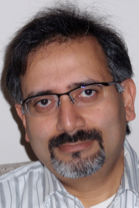
- Electron Ion Collider: The next QCD frontier (Understanding the Glue that Binds Us All)
- Bio: Sr. Fellow & Deputy Group Leader for Experiments, RIKEN BNL Research Center. Prof. Abhay Deshpande works in experimental high energy nuclear physics. His current research focuses on understanding the contributions of quarks, antiquarks and gluons to the proton's spin using the PHENIX detector and high energy polarized proton beams at the Relativistic Heavy Ion Collider (RHIC). Prof. Deshpande is Co-Chair/Spokesperson of the Electron Ion Collider (EIC), a project that has been endorsed to move ahead. EIC will study the strong gluon fields in nuclei by colliding intense beams of spin-polarized electrons and both polarized nucleons and unpolarized nuclei.
- Abstract:
- Dr. Hao Qiu (Lawrence Berkeley National Lab)
- Charm flow in heavy-ion collisions, High Level Trigger and Heavy Flavor Tracker
- Abstract: Results from RHIC and LHC support the creation of a strongly-coupled Quark-Gluon Plasma (sQGP) in heavy ion collisions. Heavy quarks (c, b) experience the whole evolution of the hot and dense medium, and are considered as a unique probe to the medium. Charm quarks are expected to thermalize much more slowly than light flavor quarks. As a result, the charm quark flow can be used to study the extent of thermalization of the bulk medium dominated by light quarks and gluons. Two sequential attempts to address the charm flow question at RHIC energy using J/ψ and D0 are reported. The High Level Trigger, an online computing framework, is developed to select interesting rare events, for example with J/ψ candidates. And the Heavy Flavor Tracker, a state-of-the-art high resolution silicon vertex detector, is constructed to improve measurements of open heavy flavor like D0. The measured J/ψ elliptic flow v2 is consistent with 0 for pT > 2 GeV/c, which is consistent with a picture that J/ψ are dominantly produced by initial production rather than coalescence from charm quarks. The measured D0 v2 suggests that charms quark exhibit finite collective behavior. There is also an indication that charm quarks are not fully thermalized in the medium created at RHIC.
-
Professor Jie Meng (Peking University)
- Covariant density functional theory for nuclear structure
- Abstract: During the last decade, the covariant density functional theory with a minimal number of parameters allowed a very successful description of nuclear structure properties ranging from ground state to excited state over the entire nuclear chart. In this talk, the covariant density functional theory will be introduced together with demonstrative examples of applications. The application for nuclear astrophysics as well as its future development will be prospected.
- Professor W. A. Horowitz (University of Cape Town, South Africa)
- Weak and Strong Coupling Energy Loss at RHIC and LHC
- Abstract:
Experiments at RHIC and LHC are teasing out the properties of the phase diagram of quantum chromodynamics, one of the four fundamental forces of Nature. At temperatures a hundred thousand times hotter than the center of the Sun, the structure of nuclear matter changes abruptly, transitioning from the usual protons and neutrons into quark-gluon plasma. Since quark-gluon plasma permeated all of space a microsecond after the Big Bang, no other experiments probe an earlier time in the history of the Universe.
Jet tomography, the study of the highest momentum particles observed from collisions at RHIC and LHC, provides the best femtoscope for examining the non-trivial, non-Abelian, many-body dynamics of quark-gluon plasma. We compare our theoretical predictions to measured data for the distribution of these high momentum particles resulting from dramatically different hypotheses for the dynamics of the quark-gluon plasma: on the one hand, assuming the quark-gluon plasma is best approximated by a weakly-coupled gas of nearly-free quarks and gluons in which the methods of perturbative QCD are applicable and, on the other, assuming the quark-gluon plasma is dominated by the physics of a strongly-coupled liquid, for which the techniques of 5-dimensional classical gravity from the AdS/CFT correspondence best capture the relevant physics. Neither story provides a fully compelling narrative, and we suggest future theoretical and experimental advances that should shed further light on the physics of quark-gluon plasma.
- Prof. Mark Messier (Indiana University)
- Next Questions in Neutrino Physics and the NOvA Experiment
- Abstract:
- Dr. Monika Sharma (Vanderbilt University)
- Discovery to Precision Studies: Quark-Gluon Plasma Physics
- Abstract: At temperatures in the trillions of Kelvin, our theory of the nuclear force predicts that quarks and gluons are deconfined in a state of matter called the quark-gluon plasma (QGP). The Relativistic Heavy Ion Collider (RHIC) was constructed over 10 years ago to create this matter in the laboratory for experimental investigation. QGP is created and turns out to have some very remarkable properties - such as flowing as a nearly inviscid fluid at extremely high temperatures. Utilizing heavy ion collisions at the Large Hadron Collider (LHC) has added substantially to this picture of the QGP and has posed some serious questions to our understanding of the medium produced in these collisions. In this presentation, I will talk about the discoveries of the last decade and the path forward at RHIC and the LHC that involve both precision measurements and opening doors for new discovery.
-
Dr. Raju Venugopalan (Brookhaven National Laboratory)
- The hottest stuff on earth: how it is formed, what it is made of, and how it flows
- Abstract: Highly ultrarelativistic collisions of nuclei at Brookhaven Lab's Relativistic Heavy Ion Collider (RHIC) and CERN's Large Hadron Collider (LHC) create the hottest and densest matter on earth. The quark and gluon fields that comprise this ephemeral matter appear to flow like a nearly perfect fluid. Understanding the properties of this strongly correlated fluid, in and out of equilibrium, is a significant enterprise and has strong overlap with the study of strongly correlated systems in the physics of ultra-cold atoms, and in the dynamics of the early universe. We will discuss the present status of our theoretical understanding of many-body Quantum Chromodynamics as informed by the heavy ion experiments. In particular, we shall emphasize the many interesting puzzles that remain and outline plans to extend present research capabilities and develop new ones to meet these challenges.
- Dr. Yadav Pandit (University of Illinois, Chicago)
- Azimuthal Anisotropy in Heavy Ion Collisions
- Abstract:
- Prof. ShinIchi Esumi (Tsukuba University)
- Heavy Ion Collision at RHIC and LHC (purdue20130612esumi.pptx, purdue20130612esumi.pdf)
- Abstract:
- Dr. Raju Venugopalan (Brookhaven National Laboratory)
- Entangled glue or collective flow: a QCD puzzle at the LHC & RHIC
- Abstract:
- Prof. Yong P. Chen (Purdue University)
- Graphene Based Radiation Detectors and Rad-hard Electronics
- Abstract:
-
Prof. Stan Brodsky (SLAC National Accelerator Laboratory, Stanford University)
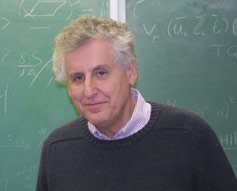
- AdS/QCD and Novel Effects in Hadron Dynamics (part 1, 2, 3)
- Abstract:
- Prof. Stan Brodsky (SLAC National Accelerator Laboratory, Stanford University)
- Heavy Quark Production at High xF and other Novel QCD Effects at RHIC (part 1, 2, 3)
- Abstract: One of the most interesting recent advances in hadron physics has been the application of Maldacena's AdS/CFT correspondence to quantum chromodynamics. One can use five-dimensional anti-de Sitter space to construct an analytic and relativistic first approximation to QCD. The resulting AdS/QCD model gives remarkably accurate redictions for hadron spectroscopy and a description of the quark structure of mesons and baryons which has scale invariance and dimensional counting at short distances, as well as quark confinement at large distances. In addition, one can compute the form of the frame-independent light-front bound-state wavefunctions, the fundamental nonperturbative entities which encode hadron properties and which allow the computation of hadronic scattering amplitudes. A number of novel applications of AdS/QCD and light-front wavefunctions to hadron physics phenomenology will also be discussed, such as color transparency, hidden color, intrinsic charm, sea-quark asymmetries, dijet diffraction, direct hard processes, and hadronic spin dynamics.
-
Prof. Cheuk-Yin Wong (Oak Ridge National Laboratory)
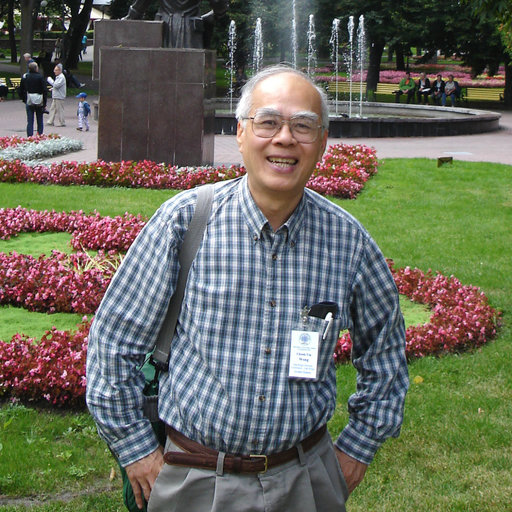
- Exploring the Early Parton Momentum Distribution using the Ridge Phenomenon
- Abstract:
- Dr. Marco van Leeuwen (Berkeley National Laboratory)
- Hard probes of strongly interacting matter at RHIC and LHC
- Abstract: